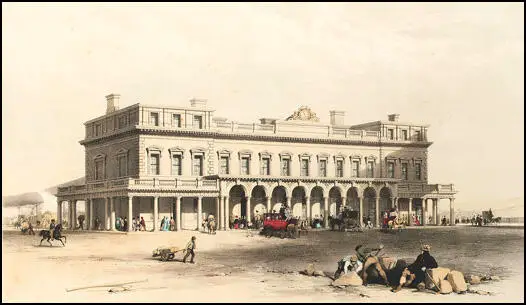Brighton Station
The building of the London & Brighton Railway started in July 1838 was completed in September 1841. Over 3,500 men and 570 horses were used to build the railway and cost £2,634,059 (£57,262 per mile).
The main railway station at Brighton was designed by David Mocatta.John Rennie decided that the station should be placed high up the western slope of the valley through which the main road from London entered the town. The building of the station began in October 1840 and was finished in September 1841.

Primary Sources
(1) The Brighton Herald (16th May, 1840)
The entrance to the Brighton terminus is at the top of Trafalger Street where a very large space (bounded on the side nearest the town by a handsome wall) has been enclosed. The point is extremely central and when the approaches have been, as they must ultimately be, improved, it will be found that no better spot could have been selected. The distance from North Street through Surrey Street is but a two or three minutes walk.
(2) The Brighton Gazette (16th September, 1841)
The Brighton Terminus is a beautiful structure, and with the iron sheds in the rear, will not suffer from comparison with any railway terminus in existence. The offices and waiting rooms are most commodious, and are furnished with every convenience for passengers. Gas fittings for the whole terminus have been put up by Brighton and Hove General Gas Company.

